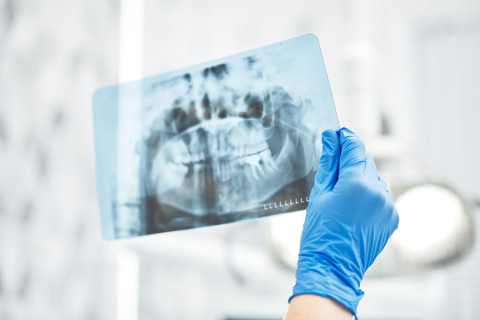About the project "Innovative method of applying relaxation bite splint in headaches"
Migraine and tension headache are a group of self-reported headaches described by the International Classification of Headaches (ICHD). Studies conducted in the European Union show that 79% of people experience headaches in a year. The cost of the condition is estimated at 100 trillion euros a year in the EU. It has been repeatedly shown that these are ailments often co-occurring with temporomandibular disorders, i.e. functional disorders of the masticatory musculoskeletal system, the treatment of which is related to the use of relaxation bite splints, among other things. With this in mind, the implementation of an additional therapeutic component to the recommended methods of management in a given clinical case seems advisable. The premise of the project is the development of new standards for the therapeutic management of primary headaches and the use of an individually developed relaxation bite splint prepared on the basis of the bony structure of the craniofacial part.
Innovative method
As written in the project proposal, stress causes increased muscle tension, which generates forces that depend, among other things, on muscle length. The different work vectors of the muscles of the craniofacial part make it impossible to develop a constant value corresponding to the stretch of a particular muscle in terms of minimizing its tension. For this reason, the possibility of generating a force that is the resultant of the action of many muscles of the masticatory organ was taken into account. The degree of mandibular retraction corresponding to such a stretch of the masticatory muscles in the aspect of minimizing the force generated by the muscle is the basis for the treatment of myofascial pain syndrome. Based on the structure of the facial part of the skull, it is possible to calculate the length of individual muscles so that, using the developed formula, it is possible to obtain the degree of mandibular retraction affecting the generation of minimal forces by the masticatory muscles. Which means that the central stimulation of masticatory muscle activity will continue all the time, depending, among other things, on psycho-emotional stress, but there will be no action of destructive forces in the peripheral structures. The effectiveness of the relaxation of the muscles of the masticatory organ in myofascial pain will be transferred to the action of the muscles of the head and facial part of the skull.
The project will involve people between the ages of 20 and 50 with headaches (tension headaches, migraine), diagnosed by a neurologist and treated for a minimum of 3 months as recommended.
The Science for Society II
Within the framework of the program, financial support is given to projects aimed at building cooperation between entities and units operating in the socio-economic sphere, developing and implementing solutions to serve local and regional communities, and creating theoretical models covering social issues. This is the first edition of the competition. Financial support will be given to 55 projects for a total of PLN 45.5 million.
The funding covered the projects in the areas of: scientific excellence, science for innovation, humanities-society-identity, and physical culture for an active and healthy society.
